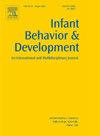Socioemotional development of infants and toddlers in the first months of foster care: A brief synthesis of 25 years of research
IF 1.9
3区 心理学
Q3 PSYCHOLOGY, DEVELOPMENTAL
引用次数: 0
Abstract
Over the past 25 years, research has highlighted the protective role of foster care over institutionalization, particularly for young children. When foster caregivers provide responsive care, children benefit from a nurturing, individualized environment that supports socioemotional development. However, foster care does not eliminate developmental challenges. The first three years of life are a critical period of rapid neurological, emotional, and social growth, making early experiences especially impactful. Entering foster care during this period can disrupt existing attachment relationships, increasing vulnerability to socioemotional difficulties. Additionally, children must navigate both the effects of past adversities and the challenges of adapting to a new caregiving environment, making the early months post-placement particularly crucial for their adjustment and well-being. This review synthesizes research published since 2000 to examine early socioemotional challenges in infants and toddlers in foster care and how foster caregivers adapt during the first months of placement. Findings suggest that attachment behaviors typically emerge and stabilize within the early weeks, shaped by multiple factors at different levels, including child characteristics, pre-placement experiences, and the quality of current caregiving. Yet, research focusing exclusively on this transition period is scarce, with existing studies varying widely in both placement duration and child age. Additionally, little is known about how foster caregivers adjust during this period, despite evidence of heightened parenting stress. More longitudinal research is urgently needed to clarify how multilevel factors interact in the first months of placement and to better understand their impact on the adaptation of infants and toddlers in foster care.
婴儿和学步儿童在寄养前几个月的社会情感发展:25年研究的简要综合
在过去的25年里,研究强调了寄养对机构的保护作用,特别是对幼儿。当寄养照顾者提供相应的照顾时,儿童就会从一个培育的、个性化的环境中受益,从而支持社会情感的发展。然而,寄养并不能消除发展上的挑战。生命的头三年是神经、情感和社会快速成长的关键时期,这使得早期的经历特别有影响力。在这一时期进入寄养会破坏现有的依恋关系,增加对社会情感困难的脆弱性。此外,儿童必须应对过去逆境的影响和适应新看护环境的挑战,因此安置后的最初几个月对他们的适应和健康尤为重要。本综述综合了自2000年以来发表的研究,旨在研究寄养儿童的早期社会情感挑战,以及寄养照顾者在安置的头几个月如何适应。研究结果表明,依恋行为通常在最初几周内出现并稳定下来,受不同层次的多种因素的影响,包括儿童特征、安置前经历和当前照顾的质量。然而,专门关注这一过渡时期的研究很少,现有的研究在安置时间和儿童年龄方面差异很大。此外,尽管有证据表明养育子女的压力增加,但人们对寄养照顾者在这段时间内如何调整知之甚少。迫切需要更多的纵向研究来阐明多层次因素在安置的头几个月是如何相互作用的,并更好地了解它们对寄养中婴幼儿适应的影响。
本文章由计算机程序翻译,如有差异,请以英文原文为准。
求助全文
约1分钟内获得全文
求助全文
来源期刊

Infant Behavior & Development
PSYCHOLOGY, DEVELOPMENTAL-
CiteScore
4.10
自引率
4.80%
发文量
94
期刊介绍:
Infant Behavior & Development publishes empirical (fundamental and clinical), theoretical, methodological and review papers. Brief reports dealing with behavioral development during infancy (up to 3 years) will also be considered. Papers of an inter- and multidisciplinary nature, for example neuroscience, non-linear dynamics and modelling approaches, are particularly encouraged. Areas covered by the journal include cognitive development, emotional development, perception, perception-action coupling, motor development and socialisation.
 求助内容:
求助内容: 应助结果提醒方式:
应助结果提醒方式:


